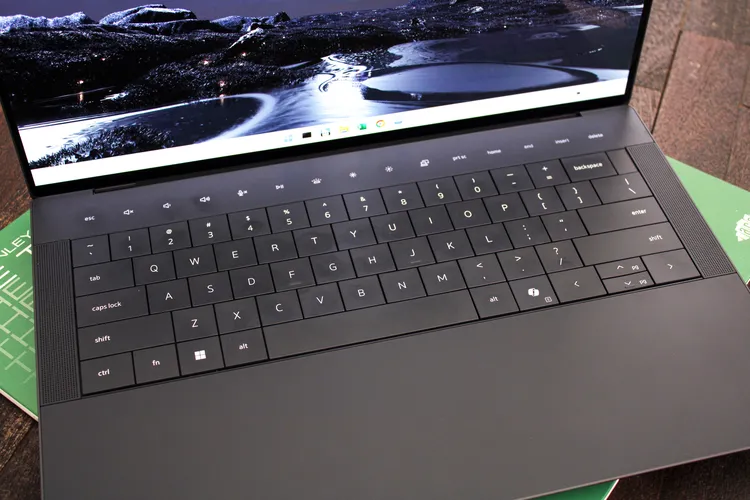The upgraded 14-inch XPS showcases a redesigned chassis akin to the XPS 13 Plus, boasting enhanced thermals and double the battery life. However, there’s more to consider

(Image credit:The Verge)
Dell introduces the redesigned XPS 14 with features inspired by the XPS 13 Plus: an integrated trackpad, sleek ‘zero-lattice’ chiclet keyboard, and capacitive touch function row. Unlike its predecessors, the XPS 14 ($2,500 as reviewed) addresses past thermal and battery life issues, offering improved performance and cooler operation even with optional discrete graphics. Powered by the Meteor Lake Intel Core Ultra 7 155H processor, it outperforms previous models, including the XPS 13 Plus and XPS 15, while boasting a remarkable OLED display and up to 12 hours of battery life on a smaller, more efficient battery.

(Image credit:The Verge)
The absence of a traditional function row disrupts my muscle memory, causing confusion between keys like tilde and escape, and caps lock and tab. Adjusting to the touch bar’s tactile-less interface integrated into the chassis—similar to the trackpad—proves challenging without haptic feedback. While the expansive trackpad area below the keyboard compensates somewhat, navigating without tactile confirmation feels less satisfying, despite occasional reliance on the OLED touchscreen for efficient navigation.

(Image credit:The Verge)
Locating the power button on the Dell XPS 14 proved challenging without an identifiable icon, quietly blending into the keyboard beside the backspace key. While initially elusive, its understated design left me feeling somewhat embarrassed for the oversight.
Despite featuring an optional RTX 4050 GPU, the Dell XPS 14 prioritizes productivity over gaming prowess. While capable of running games like Baldur’s Gate 3 with adjusted settings, dedicated gaming laptops such as the Asus ROG Zephyrus G14 offer superior performance at a lower cost. These alternatives also include gaming-specific features like adaptive sync and customizable software for optimizing fan speed and GPU performance
The Dell XPS 14 falls short of being a compelling alternative to the MacBook Pro, particularly when comparing performance against the base M3 chip and the functionality of the touch bar. Dell’s implementation of an invisible haptic trackpad, while aesthetically pleasing, proves slightly less intuitive than the MacBook Pro’s traditional trackpad. Moreover, the XPS 14’s keyboard, inherited from the XPS 13 Plus, lacks the tactile satisfaction found in previous models like the XPS 15.
While the XPS 14 competes more favorably with Windows laptops such as the Asus Zenbook 14X OLED, its pricing remains high. For those not requiring extensive 3D modeling or video work, opting for integrated graphics can save approximately $400. Considering Dell’s upcoming release of the $1,300 Qualcomm Snapdragon-powered XPS 13, prospective buyers may benefit from waiting for reviews.
Despite addressing performance and battery life issues from its predecessor, the XPS 14 retains aspects like the shallow keyboard and ambiguously labeled power button, which detract from its overall usability. While visually appealing, the XPS 14 does not deliver the same user experience quality as its appearance suggests.
Dell XPS 14 specifications (as reviewed):
- Display: 14.5-inch (3200 x 2000) 120Hz OLED touchscreen
- CPU: Intel Core Ultra 7 155H
- GPU: Intel Arc (8 Xe cores), Nvidia GeForce RTX 4050
- RAM: 32GB LPDDR5X 7467MHz
- Storage: 1TB M.2 2280 PCIe 4.0
- Webcam: 1080p at 30 fps FHD RGB-IR
- Connectivity: Wi-Fi 6E; Bluetooth 5.3
- Ports: 3 x USB-C Thunderbolt 4 with DisplayPort and Power Delivery, microSDXC, headphone/mic combo
- Weight: 3.80 lbs.
- Dimensions: 12.6 x 8.5 x 0.71 inches
- Battery: 69.5 Whr
- Price: $2,500″

